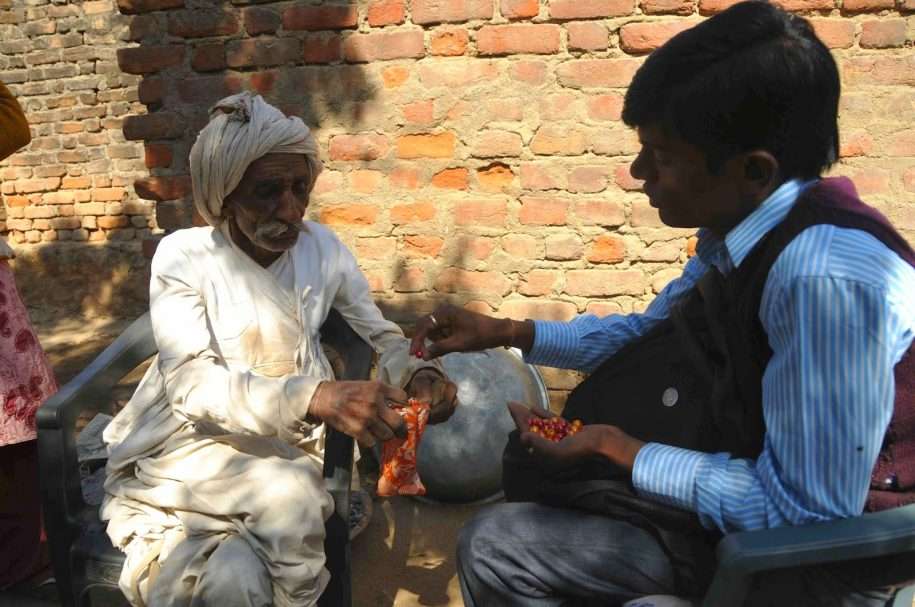- Respondents are asked to split sixty rupees between themselves and a second person. For the benefit of the post, let’s refer to the second person as player 2, and the respondent as player 1
- They are made to do the following two tasks twice
Task A: The amount being given to player 2 will be the same amount that player 1 decides to give to them.
Task B: We double the amount that player 1 decides to give, and give that to player 2, i.e
- In the latter case, player 1 allocates the money keeping in mind that player 2 would receive the double of whatever he/she chooses to give him/her.
- Player 2 is of two types, one is player 1’s friend and the other is a stranger.
- We randomly select a friend from player 1’s social network data that we collect beforehand, and assign him/her to be player 2 for the tasks. The fact that the recipient was randomly chosen creates exogenous variation in the type of relationship between players. Once, player 1 plays Task A and B with player2-friend, and then the second time player 1 plays Task A and B with player 2-stranger
 |
| A behavioral game being conducted for an insurance project in Gujarat |
The motivation behind doubling the amount in Task B is to capture a sense of expectation of return that player 1 will have from player 2. To elaborate, if player 1 gives more, player 2 gets more and so player 1 can expect a return. There are two things to be pointed out here:





